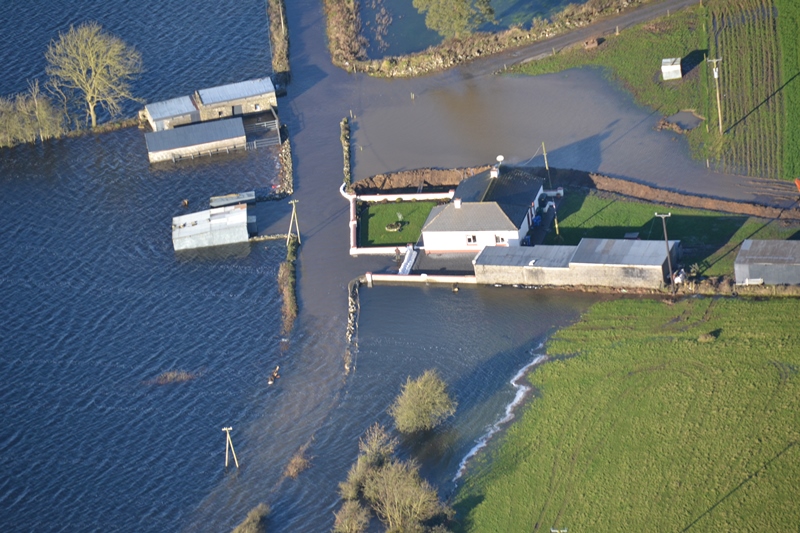Karst areas are characterised by landforms of dissolution such as sinkholes, caves, broken bedrock surface, dry valleys and this causes considerable difficulties for planning and development. Karst aquifers are particularly vulnerable to pollution and karst features can also give rise to flooding.
- Karstic environments make planning and development more difficult increasing design and construction cost:
 Typical ground profile over karst limestone, County Cork (Rutty and Jennings, 2012).
Typical ground profile over karst limestone, County Cork (Rutty and Jennings, 2012).
Reference: Rutty P. and Jennings P. 2012. Investigation, Design and Construction in Karst in Geotechnics on Irish Roads, 2000-2010, A Decade of Achievement, 11th of October 2012.
- Landforms of dissolution such as sinkholes (enclosed depressions), can affect the stability of infrastructure and development:
 Sinkhole at Waltham in 2015
Sinkhole at Waltham in 2015
- Unanticipated settlement of sediments into a cavity can cause damage to buildings and infrastructure, sometimes well after the construction phase (see also enclosed depressions page);
- Frequently collapsing land can pose a threat to livestock and disrupt farming practices:
 Rescue of a cow that had disappeared into a cover collapse sinkhole overnight in County Cork (Source O'Brien)
Rescue of a cow that had disappeared into a cover collapse sinkhole overnight in County Cork (Source O'Brien)
- Collapse and cover collapse sinkholes (enclosed depressions) can occur quite suddenly and cause damage to property and even result in fatalities;
- Lowering of the water table, mining activities or damage to water mains or pipes can often induce man made sinkholes to develop, often quite catastrophically;
- Underground cavities can also act as pathways along which contaminants and spills can travel, often travelling long distances relatively quickly (link to groundwater vulnerability);
 Flooded house
Flooded house